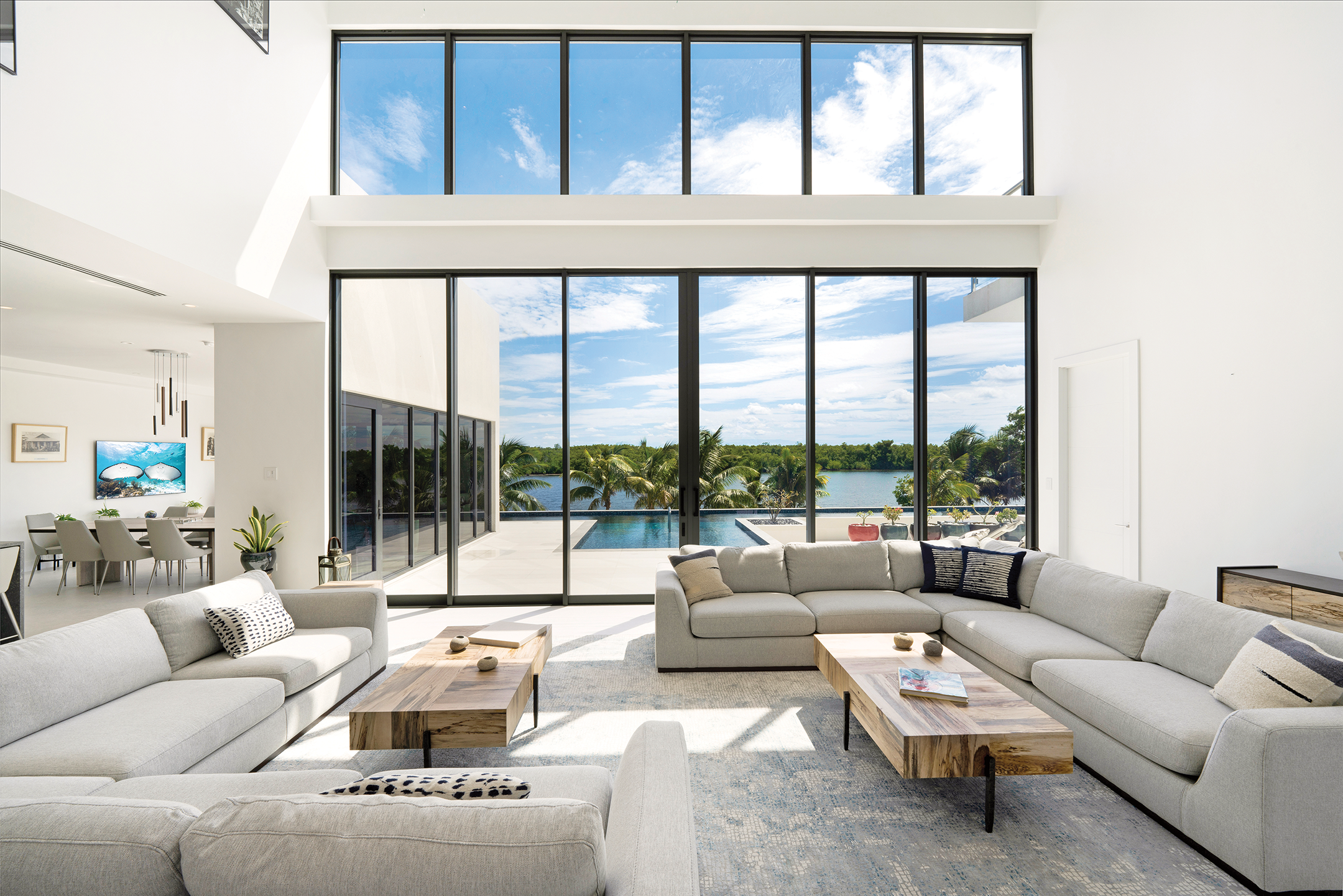
DESIGN | AT ONE WITH NATURE
DESIGN | AT ONE WITH NATURE
Words by Natasha Were.
Embracing Biophilic Design Principles
Our increasingly urban surroundings and technology-driven lives mean we’re spending more time indoors – an alarming 90% of our time in some countries – and giving more attention to our devices while becoming less and less connected to the world and people around us. This disconnect is having a negative impact on our health and well-being.
It is precisely because of this that architects and interior designers are wholeheartedly embracing biophilic design.
There is ample evidence proving that, when implemented, this design approach speeds up recovery times in hospitals, reduces truancy and improves concentration in schools, boosts productivity and increases satisfaction in the workplace.
But what exactly is biophilic design, and how can you reap the benefits at home, work or school?
Biophilia refers to humans’ innate affinity with nature. It’s a connection as old as time: our ancestors knew they depended on the natural world for nourishment and well-being, and that knowledge is embedded in us at a cellular level. It’s why we feel better when we walk on the beach, dive into the sea, or sit under the shade of a tree. And that is what biophilic design seeks to do: to revive this connection by weaving nature into the fabric of our built environments.
Beyond merely adorning spaces with greenery (although that is certainly one element), biophilic design endeavours to establish direct and indirect connections with nature.
DIRECT CONNECTIONS
We connect with nature with all our senses, so images, sounds, smells, and even other living creatures all satisfy our craving for more nature in our lives.
VIEWS AND VENTILATION
If you have windows that look out onto a garden or a seascape, make the most of them. Open the blinds so you can see the world outside, and arrange furniture so it does not block the view. For those without a direct view of nature, hanging botanical paintings, photographs, or prints is a good alternative. Remember to open those windows regularly to let fresh air in and improve the quality of the air you breathe.
NATURAL LIGHT
Natural light helps to balance our circadian rhythms, improves sleep, and aids in Vitamin D synthesis, so use natural rather than artificial light when possible, and use light-filtering blinds to screen out direct sun.
WATER FEATURES
Humans are inherently drawn to water, especially moving water, which feels cleansing and energising. For those who can’t open the window to hear the surf, water features such as fountains bring that water element in and fill the air with soothing sounds we associate with the outdoors.
INTRODUCE ANIMAL LIFE
The presence of a pet is undeniably therapeutic but introducing any form of non-human life – whether it’s a koi pond, a fish-filled aquarium, or a bird feeder hanging outside the window – adds to the tapestry of indoor environments.
PLENTY OF PLANTS
There’s no question that green leafy plants can make an otherwise sterile room feel alive. From window boxes and potted plants to green walls and trailing vines, there are numerous ways to bring plants into interiors – the more variety, the better. As well as being visually pleasing, plants purify and re-oxygenate indoor air.
INDIRECT CONNECTIONS
We can also experience nature indirectly in the materials, shapes, and colours we choose.
NATURAL MATERIALS
Choose natural materials for your floors, furniture, accessories, and decorative accents. Create a richly layered effect by mixing materials such as wood, stone, bamboo, cork, leather, linen and rattan, which all have a strong visual and tactile appeal. In addition to creating a warm atmosphere, natural materials emit lower VOCs, thus improving air quality and being less likely to provoke allergies.
NATURAL SHAPES
Modern homes are filled with straight lines, right angles and hard edges, but these forms are rare in the natural world. By imitating nature and including organic, asymmetrical shapes, gentle curves and rounded edges, one can create a far more intimate – and therefore more relaxing – space.
NATURAL COLOURS
Use a predominantly earthy colour palette of soft browns, muted greens, and dusty pinks to evoke a sense of tranquillity. If you want to introduce pops of brighter colour, choose colours from the world around you – the fuchsia of a tropical sunset, the scarlet of a hibiscus flower, or the deep blue of the ocean.
In addition to boosting health and well-being, incorporating biophilic elements into the home or workplace will make them more welcoming and, in turn, enhance one’s enjoyment of these spaces.
FIND DESIGN INSPIRATION IN THE CAYMAN ISLANDS
Robert Towell Architect (RTA)
www.roberttowell.com
Designer Windows & Doors Cayman
www.dwdcayman.com
A. L. Thompson’s
www.althompson.com
Living.ky
www.living.ky
Paramount
www.paramountcarpets.ky
Pooley Cabinets
www.pooleycabinets.com
Sticks & Stones
www.sticksandstones.ky
Vigoro
www.vigoro.ky








